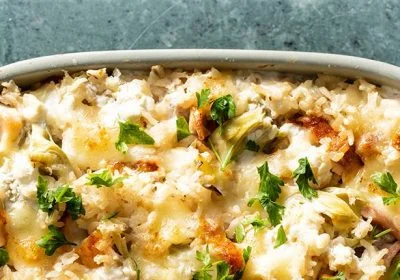With its seemingly endless coastline and lush interior, the Dominican Republic has supported a vibrant food culture for generations. There is abundant shellfish and white fish along with a variety of vegetables and legumes—sweet potato, cassava (yuca), squash, beans, and corn. Of course, tropical fruit, like coconut, guava, orange, tamarind, papaya, and more thrive here too. While the ingredients here are similar to those of Puerto Rico and Cuba, the cooking is uniquely Dominican: fresh food made from high-quality, locally grown ingredients, and recipes passed down from generations of a uniquely varied cultural past.
Dominican-Style Mashed Plantains

Plantains were brought to the island from Africa and were quickly accepted as an essential in the Dominican kitchen. Starchy, savory unripe green plantains are boiled like potatoes in stews, fried into thin chips, or twice-fried into thicker patties called tostones. Ripe plantains feature in a sweet, golden side dish called maduros. The classic Dominican breakfast mangú is made by mashing boiled green plantains with butter and salt using a pilón, or a wooden mortar and pestle, until creamy. Topped with vinegar-spiked onion slices and served with fried eggs, salami, and cheese, it’s a soul-satisfying breakfast that is uniquely Dominican.
Dominican-Style Rice with Pigeon Peas and Coconut Milk

Rice and beans are staples of everyday meals in the Dominican Republic. Pairing saucy stewed beans with rice to sop up the juices just makes sense, and the beans of choice on the island are most commonly red kidney beans and pigeon peas. Cooking the rice and beans together is also delicious. A shining example of this practice is a festive dish of rice cooked with pigeon peas, called moro de guandules. Here, the rice is seasoned with a mix of vegetables, spices, and herbs to build flavor (referred to as sazón), then pigeon peas, water, and sometimes coconut milk are stirred in and simmered until the rice is tender. It’s a dish that I was lucky enough to learn, after many attempts and well-deserved scoldings, from a seasoned culinary veteran on the island. You’ll find it at the most special gatherings of family and friends—from Christmas festivities to birthday parties.
Dominican-Style Fish Cooked in Coconut Milk

Conch, shrimp, crab, grouper, and red snapper are all caught in the waters surrounding the island. A favorite snapper dish from the northeastern peninsula of Samaná combines the fish with local coconut milk, peppers, and onions, infusing the fish with silky smooth tropical flavor as the dish simmers. White rice, boiled yuca, or fried plantains are the perfect accompaniment.
Mango Smoothie

In the fertile interior, it’s hard to ignore the sweet scent of fruit growing wild on trees. Guava, papaya (lechosa), orange, passion fruit, pineapple, and mango—to name a few—are eaten as a snack, served for dessert, or transformed into refreshing batidos, or smoothies. Dominicans like to make batidos by blending fruit pieces (we use mango here) with milk and sugar until smooth and frothy.
Dominican Corn Pudding

Another traditional, irresistible sweet is a smooth corn pudding called majarete. Pureed fresh corn, milk, sometimes coconut milk, sugar, and cornstarch are stirred slowly in a pot until thick, then chilled and dusted with cinnamon. It’s a cool and comforting island dessert.
With such a rich mix of cultures and a seemingly endless supply of fruits, vegetables, grains, spices, fish, and meat, Dominican cooking is as delicious as it is varied. Try these classic recipes, adapted as closely as possible with ingredients found here, and transport yourself to the island.









